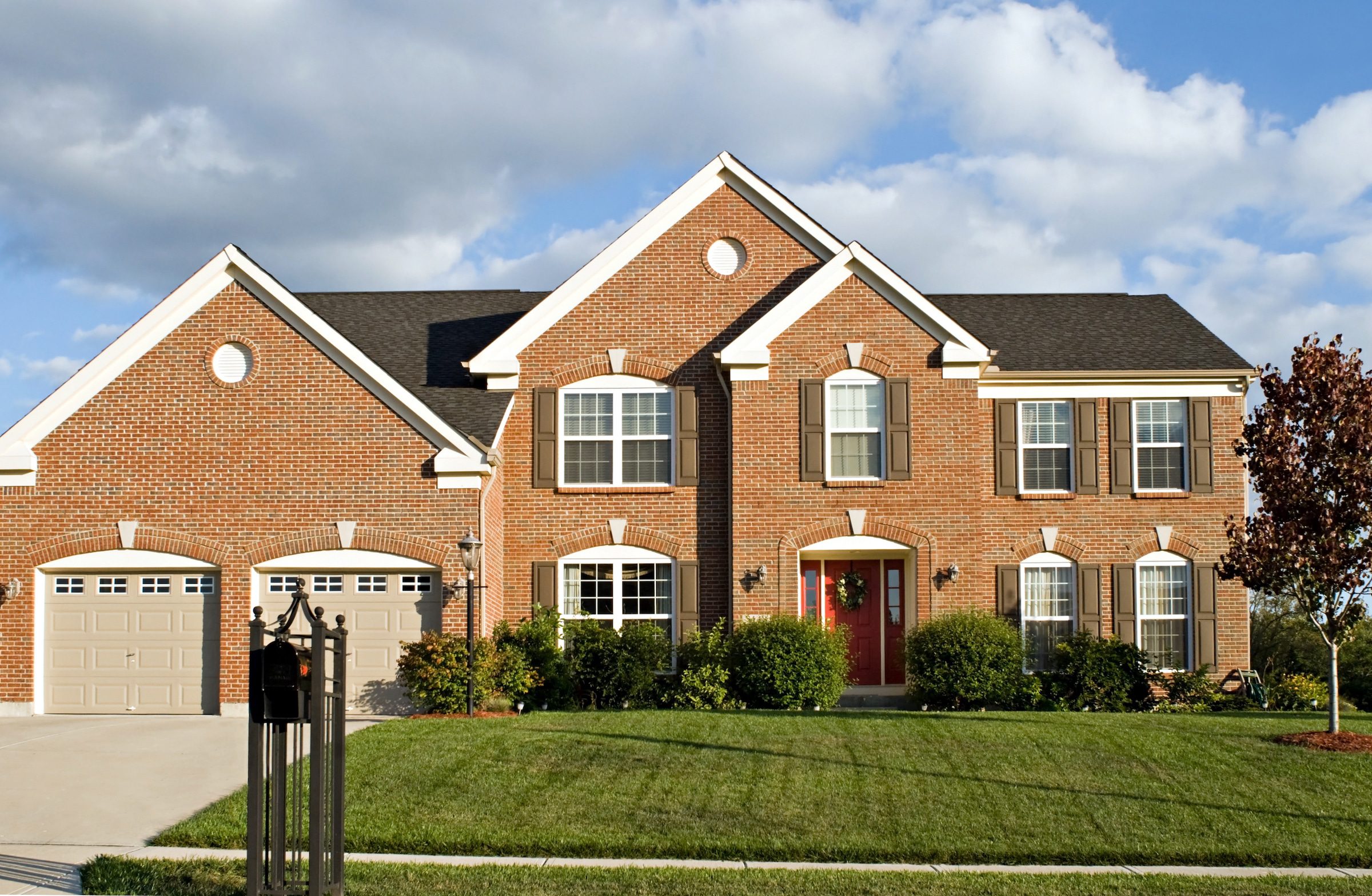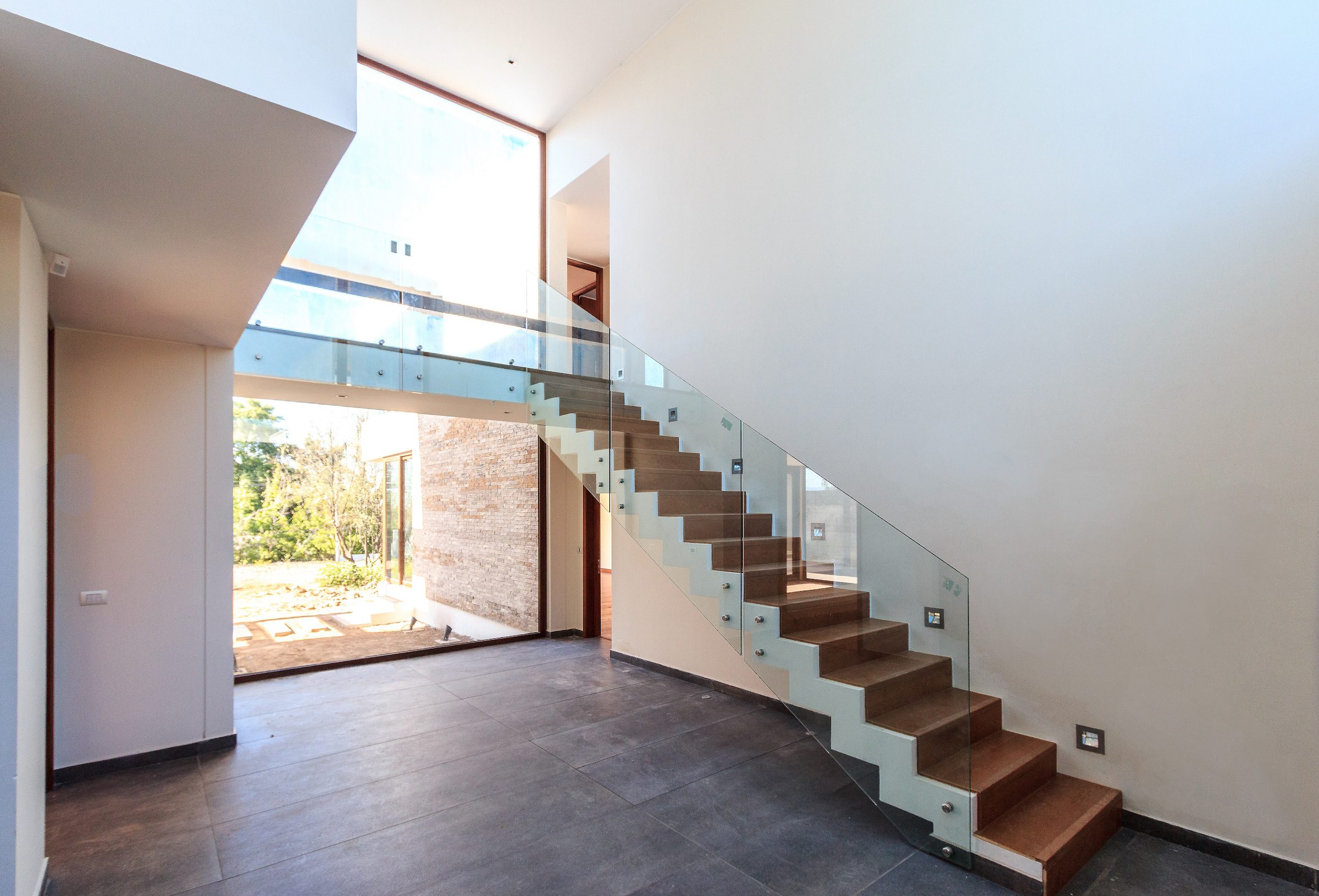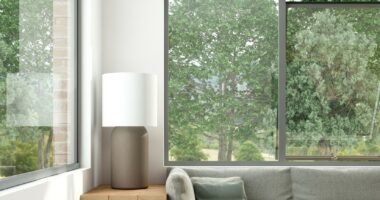This informative article explains the different types of aluminium windows, including how they open, their design aesthetics and what to consider when choosing aluminium window
What is an aluminium window?
Aluminium window frames are durable, strong and low-maintenance, providing clean lines and a modern aesthetic. Aluminium windows are incredibly versatile due to their design choices and colour options. Because aluminium is a strong, lightweight metal, the aluminium window frames can be manufactured slimmer than PVCu or wood yet still be strong.
Aluminium window design choices
There are two areas to understand about aluminium window designs.
First is the design of the window frames. Most quality aluminium windows come with several frame options. So whether you’re looking for a flat and modern frame, something with a shape or sculpture, or even something close to a traditional timber or steel window, aluminium window designs cater to most requirements. The design of the frame determines the opening type of aluminium windows you can have.
Second, what is the overall look and aesthetic of the aluminium window, what are the size of the openings and how many fixed or opening elements are required? Are you looking to retain the look of the original windows or completely change the appearance of the property?
Aluminium window design options are virtually unlimited; there are only a few factors affecting types of aluminium windows:
- The maximum sizes possible due to technical, structural, security or safety reasons.
- The minimum and maximum sizes due to minimum or maximum tolerances.
- The potential limitations due to handling, access and transportation logistics.
An excellent example of the limitations is how large a hinged window’s opening element can be. Most aluminium windows only go up to around 1.2 m or 1.5 m, with side-opening windows even smaller at 600 mm or 900 mm. So you won’t find extra-large opening windows beyond these sizes.
Another example is floor-to-ceiling windows or large picture windows. These are usually available up to the maximum size of the glass. Compared with timber or PVCu windows, aluminium offers both smaller and larger windows, bigger glass sizes, and slimmer frames.
Which type and quality of aluminium window frame is best?

This is very simple to answer. Virtually all current aluminium windows use nearly identical aluminium quality and type. Aluminium profiles have, for years, met long-established British, European and other standards for thickness, quality, suitability for use as a window material and type.
The aluminium grade in modern windows is typically Alloy 6063, offering all the machining, corrosion-resistance, heat treatments for colouring and other characteristics suitable for the windows and doors we buy for our homes, factories and commercial buildings – otherwise known as ‘Architectural Applications.’
The type of aluminium best for windows is thermally insulated profiles, typically using a polyamide thermal break, the latest generation insulator, creating a thermal bridge between the outside and inside profiles. Together with the double or triple-glazed glass in your aluminium frame, the thermally insulated aluminium profiles create an energy-efficient window. Another benefit of thermally insulated profiles using polyamide is you can easily have windows with a different colour frame inside and out.
Top tip: Don’t be swayed by marketing claims of ‘premium grade’ or ‘superior’ aluminium extrusion—these aren’t actually giving you a more premium product. Ask what the technical specifications of the aluminium are and then compare them with those of other brands. You’ll find that they’re nearly always the same. If you need further clarification, feel free to reach out to us.
What are the aluminium window opening types?
Here, we outline the various aluminium window opening options. Please bear in mind that brands do not offer all these types of aluminium window openings. You can contact us for information if there’s a particular window opening you’re after.
Most people expect their windows to open and close, but there are also times when a fixed pane is required, such as for tall openings where a sliding door with a fixed pane above is installed, generally called architectural glazing.
Top hung windows opening outwards
The top-hung opening window provides hinges on both the left and right sides of the frame, with the window handle at the bottom and opening outwards. This window suits more modern styles of aluminium windows as well as window designs with larger glass panels and fewer dividing mullions and transoms.
The benefit of top-hung opening-out windows is they are available in larger sizes than side-hung windows.
There are two potential drawbacks to this window. One is that if it’s placed over a kitchen sink, reaching out to close the window is difficult. The second is that if it’s fitted to ground floor level or opens onto pathways, it may need restricting to avoid injury to others.

Side hung windows
The side-hung design is popular with traditional or modern homes. Here, the window hinges from the top and bottom, with the window handle on the side.
The advantages of these windows are flexibility and safety. Easy-clean hinges slide the open window along its frame, letting you clean the outside pane of glass from inside the room. Fire-escape hinges allow suitably sized windows to open out to 90 degrees.
The drawback to this window is that it’s restricted by size. Most side-hung types of aluminium windows are only around 600mm wide, with a handful of products slightly wider. They’re also frequently restricted in height.

Tilt and turn windows
One of the most flexible and convenient windows is the tilt-and-turn window. Operated by a multi-functional handle, they have two opening options. One is where the window tilts inwards from the bottom for ventilation. Then, closing the window and rotating the handle in the opposite direction allows the entire opening element to swing into the room.
The first benefit is cleaning the outside pane of glass from the outside; the other is allowing larger opening vents than side-hung or top-hung windows.
Tilt-and-turn windows won’t be for everyone. The more complex gearing means window frames are thicker than side-hung or top-hung versions. The main advantage of tilt-and-turn is that they come in significantly larger sizes. In fact, it’s possible to get tilt-and-turn windows that are virtually the size of a door. As a result, they’re ideal for windows leading to a flat roof or a Juliet balcony.

Sliding windows
There are two types of sliding aluminium windows: vertical and horizontal sliding.
The vertical sliding aluminium window replicates the look of traditional sash windows, an obvious solution for those in homes wishing to replicate existing sash windows.
The horizontal design is basically a small-scaled patio sliding door, it’s not a very popular design, although it does allow the largest possible window openings of any.

Flush casement windows
The flush casement window is a more recent innovation offering both contemporary or traditional aluminium windows designs. Therefore, they’re ideal for cottages, set into stonework, timber subframes or in a contemporary home.
Smart Systems offer one of the slimmest profile, as does the aïrMOD system. Thicker profile versions come from Origin, Stellar, Decalu and other brands.

Bottom hung windows opening inwards
Not all window systems are designed to accommodate a bottom-hung design, which is hinged at the bottom with a catch at the top and simply tilts inwards – an inside-out top-hung casement.
Another way of looking at a bottom-hung window opening is as a tilt-and-turn but without the turning facility.
Their use is quite limited in residential properties as they do not provide much ventilation. However, they may be worth considering if you have a very small WC or a temporary room like a cellar or storeroom.
You may have difficulty tracking bottom-hung aluminium windows down, but systems such as AluK and Schuco provide them.

Other types of opening windows
Whilst less popular with dwellings, other opening types of aluminium windows and designs exist. These include bifolding, pivoting, reversible, parallel-opening, and inward-opening windows.
Pivoting windows pivot right back on themselves so the outside pane of glass ends up on the inside. They are available as horizontal or vertically pivoting windows and are generally used in high-rise buildings, where they can facilitate the cleaning of the windows from the inside. They may not suit every home, but they can be much larger than typical top or side-hung casement windows.
Top swing reversible windows are also mainly used in high-rise buildings, but they could be worth considering for the home. Essentially, these operate in precisely the same way as top-hung casement windows, but they use a very sophisticated friction-stay mechanism. The window is opened to its normal opening position and then stops as a standard opened window. Upon releasing a catch on the friction stays, the window continues to open out still further and reverses back on itself, bringing the outside pane to the inside.
You can also find combinations of window designs, such as opening outward windows combined with a tilt-and-turn. Of course, it’s also possible to integrate all these types of aluminium windows within a door screen.
Floor-to-ceiling and panoramic windows

Popular with new extensions, modern homes or high-end architecture and glazing are large panoramic, floor-to-ceiling windows and even glass curtain walling.
These aluminium window designs rely on suitable framing and significant expertise by the installer. Only maximum glass sizes determine the sizes possible. Crucially, there are more technical or structural considerations over and above standard window designs, such as wind deflection.
These dramatic oversized windows create a statement-piece window but do require a more experienced installer and window manufacturer. Please contact us if you would like help with selecting an installer.
Internal aluminium windows designs and types

Whilst this article concentrates on exterior aluminium windows, there are the same options and choices for windows used internally.
One consideration is that exterior-grade windows come with thermal insulation and double-glazed units; these elements are not usually needed inside the home. Where you don’t need specific sound or insulation requirements of double-glazed panes, single-glazed glass creates a better overall look. Internal single-glazed windows are also slimmer in most cases.
Therefore, for internal use, it’s worth considering specialist internal window products with brands like Aluco.
How to choose the right aluminium window
Buying the right window comes down to your property type, whether you’re replacing existing windows and stuck with existing opening sizes or have more freedom with a new build or extension. Here are our words of advice:
- Research as many aluminium windows brands as possible, to understand the options available.
- Consider safety as well as security such as a means of escape.
- Whilst the slimmest windows are desirable, they don’t always offer the required functionality.
- Fewer options exist for internal aluminium windows designs.
- Check the windows meet current building regulations
Find out more about who makes the best aluminium windows. DWE are here to help, if you have any specific questions regarding your own window installation, please do not hesitate in contacting us.
Latest Aluminium windows articles
- Oriel windows and frameless box windows November 17, 2024
- Door and Window trends for 2025 November 11, 2024
- Revealing the Leading Slimline Aluminium Windows August 7, 2023
- The complete guide to reynaers aluminium windows July 19, 2023
- Getting the best windows and doors – a practical guide May 30, 2023















